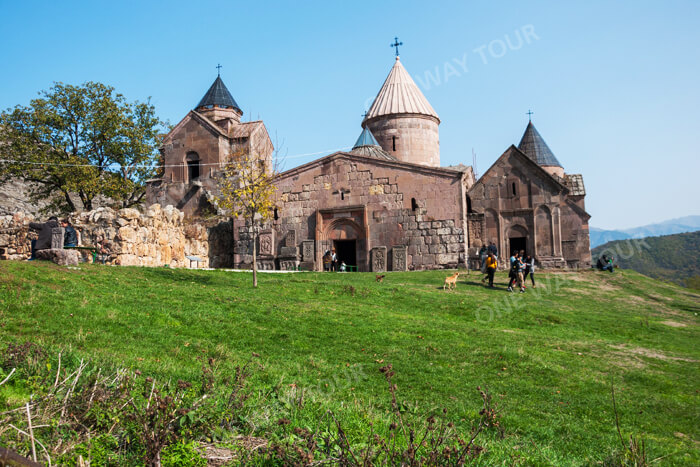Tavush fortress or otherwise called Tslik Amram Fortress is a Medieval Fortress on the outskirts of Berd city in Tavush Province, on the right bank of the Tavush River. Tavush fortress is mentioned for the first time in the beginning of the 10th century as Ashot Erkat’s residence. The one of the unique features of the fortress was its water supply. Since the 14th century, the fortress has been abandoned.
The well-established transport infrastructure of Armenia allows to get to Tavush fortress by a private car or with the help of various travel companies which offer regular excursions and tours to different sights of the country. Due to the geographical location of Tavush fortress the trip will not seem long.
The high season in Armenia lasts for a long time due to the pleasant climate conditions. Warm days in Armenia start in March and last until late autumn; winter is usually snowless and not long. The high precipitation season is variable. The tourist season for Tavush fortress depends on the weather conditions.
According to the legend, during the attack of the Arab invaders, Ashot Yerkat (II Iron) strengthened his troops in the impregnable fortress. The enemy besieged the fortress, but could do nothing with the settlers. Once an old woman secretly left the fortress to bring food to the besieged. The Arabs forcefully found out from her the source of water and blocked the flow. Despite this, Ashot Yerkat, who was in the fortress, did not give up. So, he left the fortress and moved to Lake Sevan with his troops at a dark night.
The fortress has been abandoned since the 14th century and today it is in poor condition. No one can enter, because the entrance and exit of the structure is unknown.
According to Muratsan's historical novel “Gevorg Marzpetuni”, Ashot Yerkat was in love with the beautiful Aspram, Tslik Amram's wife, and that was the reason of his visits to Tavush province. Locals say that during the recent excavations near the fortress a skeleton with a noble woman’s jewelry was found. It is assumed that it was the body of Aspram.
NOR VARAGAVANK MONASTERY
28 km

GOSHAVANK MONASTERY
81 km

DILIJAN NATIONAL PARK
95 km
